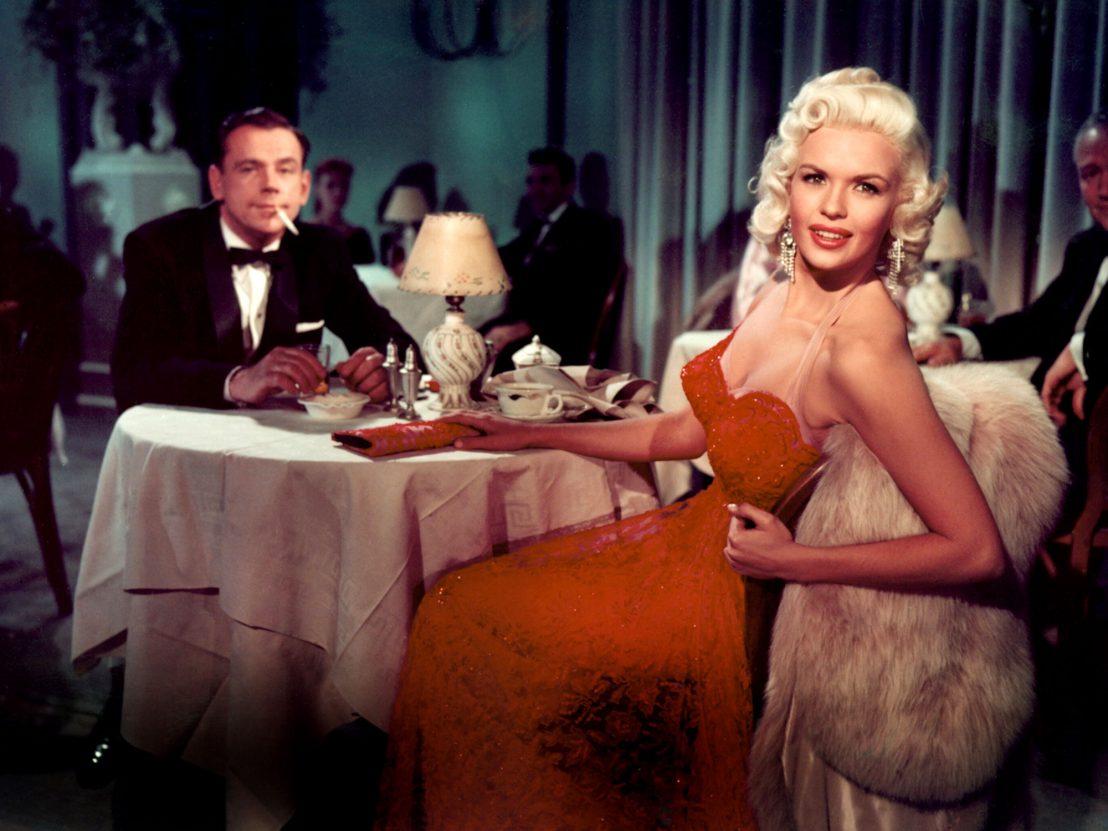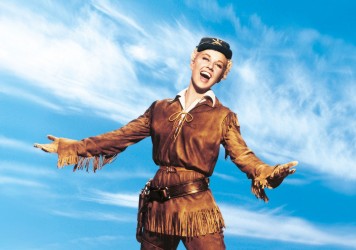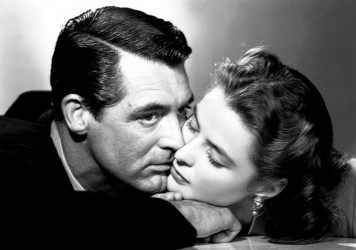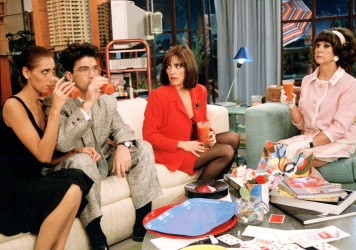
There are few cinematic pleasures greater than watching Jayne Mansfield walk down the street. Too often likened to a poor man’s Marilyn Monroe, what with her blonde hair and coquettish screen presence, Mansfield deserves far more credit for her ideal, winking embodiment of pin-up femininity, which reached its apex in Frank Tashlin’s 1956 rock ’n’ roll musical comedy The Girl Can’t Help It.
Tashlin, shooting in glorious DeLuxe Color and CinemaScope, got his start as a director and animator of Warner Brothers cartoons, and as virtually any piece of writing on the director will tell you, it shows. “There’s nothing in the world to me that’s funnier than big breasts,” he was once quoted as saying – a crude statement, sure, but one that speaks to a symbiotic relationship between the bawdy auteur and his curvaceous and comical star.
In one of the film’s many iconic moments, Mansfield walks down the street as the title song blares and men gawk. Perhaps ‘walk’ is an inadequate word. She sashays, her whole body swaying, and she smiles broadly. Throughout the film, Mansfield’s lipsticked smile helps to keep her depiction from edging toward sexist caricature. The Girl Can’t Help It is a colourful, silly film buoyed by the actress’ performance of joie de vivre. Mansfield’s over the top-ness, amusingly likened to “a computer-generated image before the fact” by J Hoberman in The Village Voice, has a strong, surprisingly modern element of self-awareness.
When her character, Jerri Jordan, having completed her saunter down the street, greets press agent and eventual love interest Tom Miller (Tom Ewell), she holds two milk bottles up to her ample bosom. “Good morning, Mr Miller!” she chirps, standing with the bottles arranged just so. The ditsy blonde may be one of the best-known tropes of ’50s Hollywood, but there’s no way in which Mansfield is unaware of the gesture’s obvious sexual symbolism. A quick (and infinitely rewarding) Google search of ‘Jayne Mansfield dogs’ reveals a variety of pictures of the actress holding her beloved pet Chihuahuas up to her bosom in quite a similar fashion to how she held those milk bottles. On-screen and off it, Mansfield used her superlative figure as a site of sassy visual comedy.
The famous 1957 photograph of Mansfield sitting next to Sophia Loren serves as a succinct visual thesis of her as a performer. Mansfield looks directly at the camera, wearing a dress cut perilously low and smiling while Loren side-eyes her cleavage. Mansfield appears totally in control – her smile here says she knows she’s going to be looked at. She’s not some victim of sexist society, but rather someone who uses the male (and female!) gaze to her benefit. In his review of The Girl Can’t Help It, Francois Truffaut – himself a master of cinematic empathy – wrote that Tashlin, “instead of ridiculing her, makes her a likable and moving personality.”
Truffaut emphasises Tashlin’s direction over Mansfield’s performance, but Mansfield’s “likable and moving personality” is largely a result of her prowess as a screen presence. She often giggles while she speaks, clearly enjoying being a blonde bombshell. In one scene, Jerri takes Tom out for a beachside picnic. “There are blankets here too,” she says, unloading supplies. “Blankets?” Tom asks. “To sit on!” she replies. There’s no way to adequately transcribe the sound she makes to punctuate the pro-blanket statement. It’s the sound of a cartoon orgasm and a Valley Girl’s “Duh!” It seems impossible that she’d pepper her dialogue with satisfied sounds unknowingly.
Mansfield’s performance is a charming whirlwind of ’50s womanhood so exaggerated and perfect it’s hard to believe it ever truly existed. In the title song, Little Richard sings, “She got a lot of what they call the most.” Watching Mansfield giggle and strut and command the CinemaScope frame, who could ever argue with that?
Published 17 Jun 2017

By Elisa Adams
This classic Doris Day musical from 1953 is filled with catchy, surprisingly progressive show tunes.

The Swedish star was never better than in this 1946 thriller from Alfred Hitchcock.

In anticipation of Pedro Almodóvar’s new film Julieta, revisit the Spanish director’s liberating 1988 gem.